Bed bugs’ greatest traits are their expertise in hitchhiking, and hiding, and their survival skills. An adult bed bug is about a quarter-inch long and flat as a piece of paper. This miniature size enables it to hide even in the most unlikely places.
Can bed bugs live on walls? Bed bugs can live in walls. If your wall has crevices and cracks that can fit a business card, then it is a potential home for a bed bug.
Read this article to be aware of the reason for those bed bugs on your walls, how they got there, where exactly you can find them, and how to eradicate them. Let’s start!
Can Bed Bugs Climb Walls?
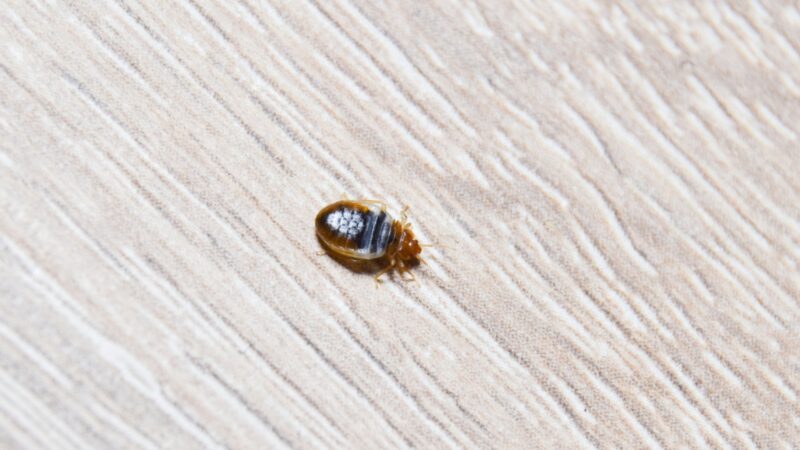
Bed bugs can climb walls. Their feet may not be designed to jump or even move through hair/ fur but bed bugs are not hindered by the upward climb of a wall or any other steep surface.
Bed bugs do not have wings and so they cannot fly and neither are their legs made for jumping. So they move from one place to another through crawling. If your bed is up against the wall, they will definitely crawl onto the wall and find a nice crack where they can start multiplying and later infesting other places.
Can Bed Bugs Live in Wood Walls?
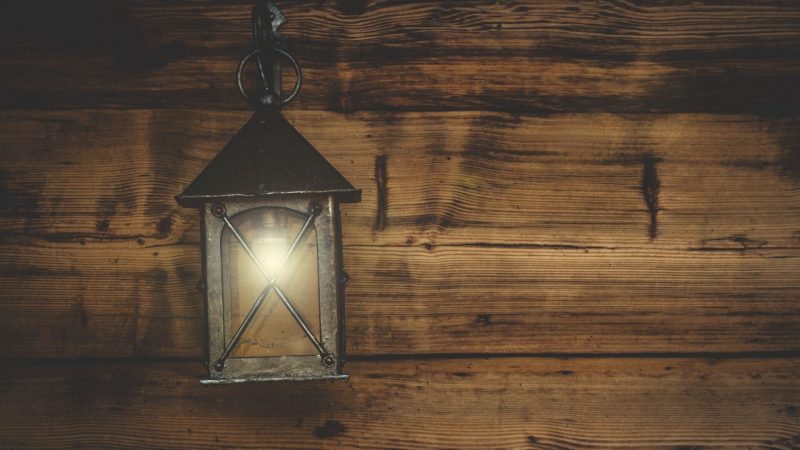
Bed bugs can live in wood walls. While the few uneven surfaces are attractive to the eye and add to the décor of the home, they also provide a very convenient hiding spot for bed bugs. Here are some reasons why:
- These spaces are dark and hidden, making them a perfect hiding spot for bed bugs.
- Most wood is brownish in color, which is similar to the color of bed bugs, this provides them with a great camouflage opportunity.
- Wood is a bad conductor of heat and thus it will neither get too cold nor too hot leaving the bed bug in a cool undisturbed environment.
Having wood for your walls does not exempt you from harboring bed bugs within the walls. In fact, it provides them with a wide range of hiding spots.
Can Bed Bugs Travel Through Walls?
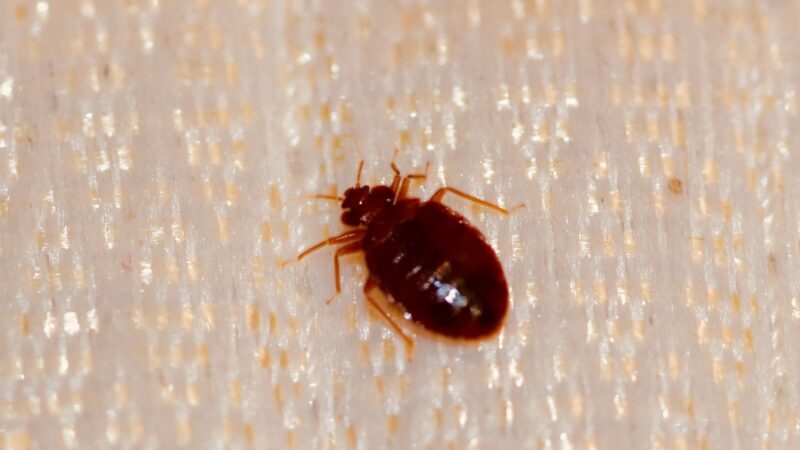
Bed bugs can’t travel through walls. There is no way for them to go inside and make a hole on the other side of the wall. They can only get on top of the wall. Traveling in this case, includes them moving from one room to the next and even from one apartment building to the next.
Studies have shown that bed bugs can travel a distance of 30-40 feet from their hiding spots to their host for a meal. These same studies have shown that during bed bug treatment in any home, some bed bugs will instead flee from the treated areas into untreated areas.
These untreated areas can be either another room in the house or the next-door apartment. Remember we mentioned earlier that these pests are well equipped with survival skills. Thus, they will even travel further than normal, just to flee from pesticides.
They will crawl along the walls, through wall outlets, cables, and anything that is positioned along the walls to get to their destination. This is one of the reasons it is quite challenging to fully eradicate bed bugs from your home.
Can Bed Bugs Live in Brick Walls?
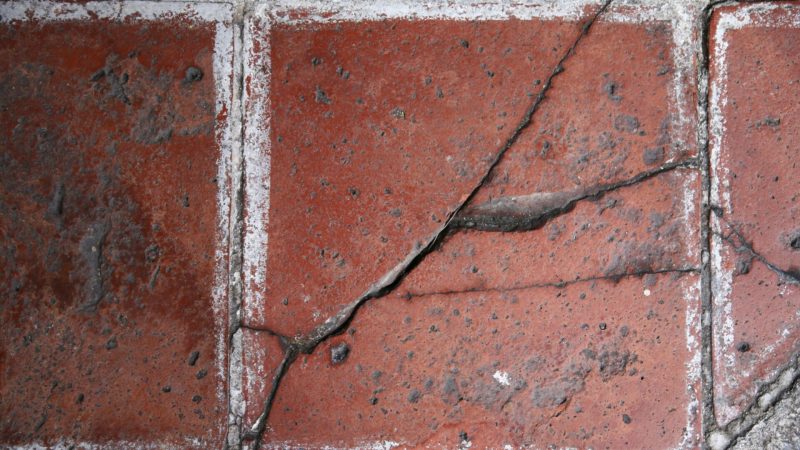
Bed bugs can live in brick walls. The only difference between a brick wall and a wooden one is the fact that the wooden one comes with natural cracks and crevices while the brick wall doesn’t.
In the case of a brick wall, the reason bed bugs are able to live in it is that we enabled them to. This means that if we fixed all the cracks, crevices, peeling wallpaper, broken sockets, and broken baseboards, there wouldn’t be that many places left for the bed bugs to live in.
Can Bed Bugs Live in Wall Outlets?
Wall outlets that are close to your bed are the biggest culprits for harboring bed bugs. They will happily set up camp in the wall outlets and only leave for their occasional meal from the nearby sleeping host.
Wall outlets act as a pathway for bed bugs from other rooms or apartments into yours. To cut off this passageway, you need to put powder bed bug pesticide outside of the socket box. This will kill any bed bugs which are already in the outlet when they come out and repel the traveler bed bugs from neighboring apartments.
To ensure that your wall outlets are completely free from bed bugs, seal off all those edges around the outlets using silicone glue.
How Long Can Bed Bugs Live in the Walls?
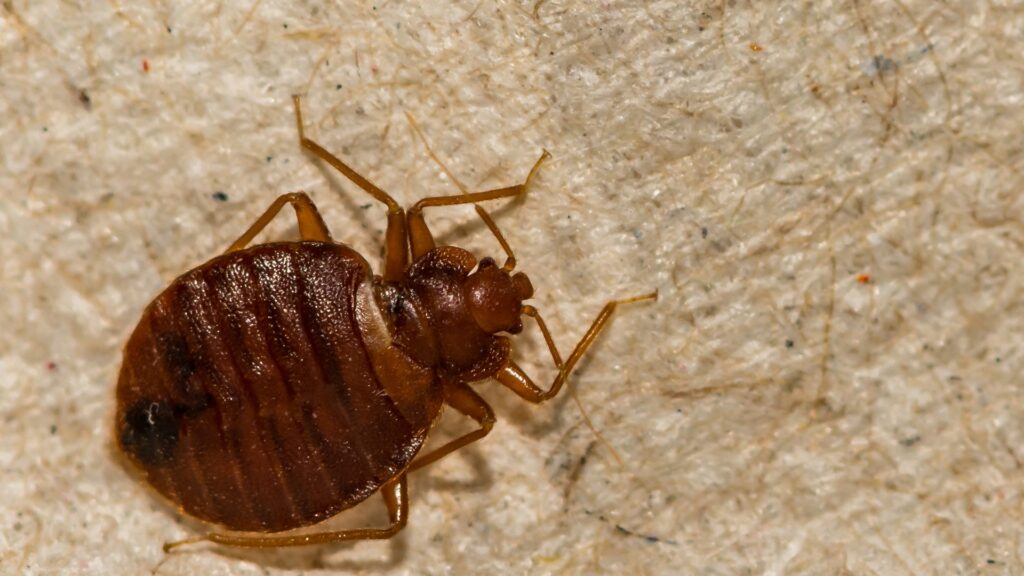
Bed bugs can’t remain concealed in the walls permanently since they must come out to eat and multiply. Depending on the temperature and humidity, bed bugs in a wall can live for 20–400 days without eating.
Can Bed Bugs Eat Through Walls?
Bed bugs are not like termites. They do not eat through walls because they do not have the ability to burrow. They just use cracks in the wall as a hiding place.
Signs of Bed Bugs on Your Wall
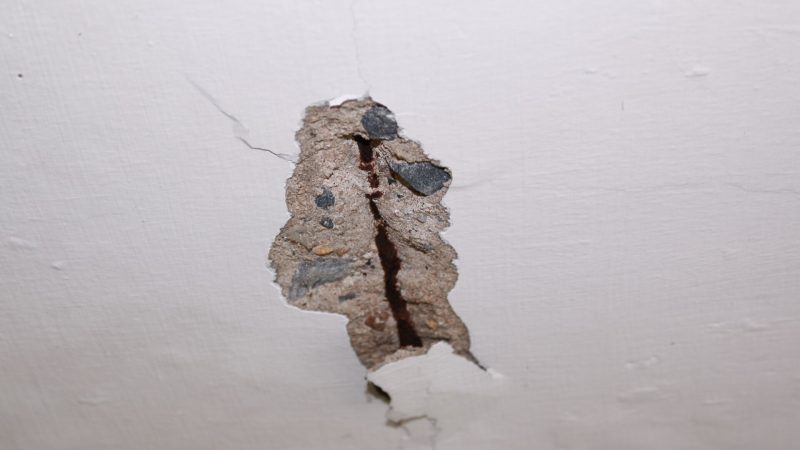
It is not easy to see a live bed bug walking around. However, once they are well established in your home, then you start seeing signs of their presence. Signs of bed bugs are:
- Blood stains on various surfaces including your walls
- Dark spots of bedbug excrement
- Eggshells, or shed skins
- A musty odor in the areas where they have set up camp
- A bed bug crawling on the wall
Once you spot any of the above signs, do an in-depth inspection of your walls to see where exactly the bugs are hiding. Then, commence with choosing the treatment options listed below.
Does Painting the Walls Help Get Rid of Bed Bugs?
Bed bugs mouthparts are experts when it comes to feeding on mammals but that is about all they can do. These mouth parts, combined with their weak feet are not designed to chew or claw through surfaces.
With this in mind, painting the walls helps a lot with getting rid of bed bugs on the walls. But before applying paint, you should use sealants to cover the cracks and crevices on your wall. This combination is a very effective way of ridding your wall of bed bugs.
Apply an appropriate coat of sealant on the wall and cut off the bed bug population in your wall from the population in other areas of the room. These sealants, if applied, will protect any surface in your home from harboring bed bugs. These surfaces include walls, baseboards, beds, all furniture, etc.
How to Get Bed Bugs out of Walls? | Step-by-Step Instruction
Getting rid of bed bugs from your wall requires a combination of methods to achieve maximum results. The following thorough steps will aid in your efforts to successfully eliminate the bugs.
Step 1: Clean Your Wall/Vacuum Cleaner
The first thing you want to do is clean your wall. This will remove the excess bed bugs and their feces. Use a vacuum cleaner that has a hose or one that is handheld. This will help you get to those out-of-reach surfaces that are probably housing legions of bed bugs.
A flexible and yet sealed vacuum cleaner is the ideal choice for this task. One such vacuum is Atrix VACBP1 Ergo HEPA Backpack Vacuum .
- ERGONOMIC BACKPACK VACUUM - The backpack vacuum weighs 10.3 lbs...
- COMMERCIAL OR RESIDENTIAL APPLICATIONS - Use the lightweight...
- HEPA FILTER - The 8-Quart HEPA filter safely captures smalls...
- PACKED WITH ATTACHMENTS - Includes backpack vacuum, 6' hose,...
- POWERFUL 1400 WATT 12 AMP 120 VOLT VACUUM CLEANER - The backpack...
Step 2: Steam Cleaning
The second step is steam cleaning the cracks and crevices. A vacuum will have helped in removing most of the bed bugs but a steamer will penetrate deep into the cracks and reach those bed bugs that may have escaped the vacuum.
The reason for using a steamer is that heat kills both bed bugs and their eggs. Ensure that you steam all corners of your wall for maximum effect. A steamer such as J-2000 Jiffy Garment Steamer is very efficient.
- 1300 watt solid brass heating element (120 volt for North America...
- High-impact plastic outer housing for durability
- Quick two minute heat-up time.6 inches wide plastic steam...
- 1.5 Hour steam time per filling. Water Capacity: 3/4 galloon /...
- Made in the USA
Step 3: Bed Bug Spray Killer
The next step is using a contact spray bed bug killer. This kills bed bugs instantly upon contact. Spray it all over the corners of your walls, paying close attention to the baseboards, wall outlets, and wallpaper edges.
A contact spray such as Bed Bug Patrol will help in the first phase of treatment.
- PROVEN TO BE EFFECTIVE! — The Journal of Economic Entomology...
- KILLS ALL STAGES OF BED BUGS, EVEN PESTICIDE RESISTANT ONES: —...
- OUR PRODUCT IS 100% PLANT-BASED & NON-TOXIC: — Bed Bug Patrol...
- BE ASSURED OUR PRODUCT IS FAMILY, CHILD & PET SAFE — You Will...
- UNIVERSITY & LAB TESTED — Rutgers University and Snell...
Step 4: Residual Pesticide Application
Next, you want to make sure that the bed bugs have no chance of returning and repopulating your house. Using a residual pesticide will ensure that your home is protected for months to come.
A pesticide such as Premo Guard Bed Bug will be effective for a lengthy period. Apply this in the same areas you applied the contact spray because the contact spray doesn’t have a lasting effect.
- NATURAL. Made from natural ingredients. Use for entire home,...
- SAFE FOR FAMILY and PETS. You can use our bed bug spray with...
- STAIN and SCENT FREE. When used according to label directions the...
- POWERFUL BUG KILLER. Kills bugs in all life stages (eggs, nymphs,...
- EFFECTTIVE RESULTS. Our products are safe and are formulated...
Step 5: Seal off Their Hiding Places
Finally, you need to seal off the possible hiding places of these bugs. Once you have gone through all the above steps, you are now well aware of all the places bed bugs have been hiding within your wall.
Use the appropriate sealants, such as Gorilla Waterproof Caulk & Seal , for the various places within your walls. You can paint the wall, use vanish on the baseboards and seal off the openings around all wall outlets.
- Waterproof sealant: This clear caulk seals out air, water, and...
- Speed meets strength: Caulk & Seal's silicone caulk is ready for...
- All-purpose: Gorilla caulk works wherever the work is; Indoor and...
- Gorilla tough: This clear silicone caulk is not only mold &...
- Use on: Our sealant is perfect for windows, doors, stainless...
Step 6: Repeat Some of the Steps
Repeat the treatment process listed in the third and fourth steps above two more times for a fully certified bed bug-free home.
List of Sources
Sutherland, A. M., Choe, D. -H., Lewis, V. R. (2013). Bed Bugs. Agriculture and Natural Resources, University of California.
Diseases & Conditions – Bedbugs, Mayo Clinic
Koehler PG, Pereira RM, Pfiester M, Hertz J. (2011). Bed bugs and blood-sucking conenose. EDIS.
- How to Get Rid of Copperheads | Practical Guide - August 27, 2023
- How to Get Rid of Corn Snakes | What Makes Them Aggressive? - August 27, 2023
- How to Get Rid of Alligators | Safety Measures and Removal Methods - July 16, 2023





